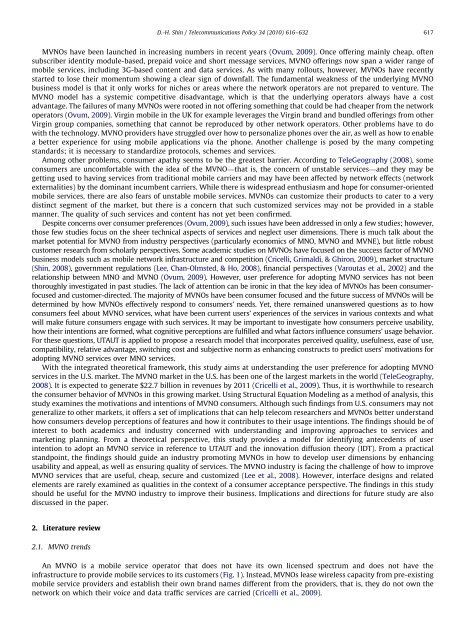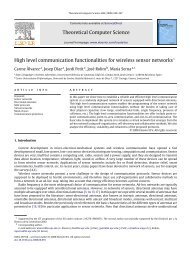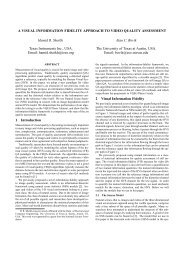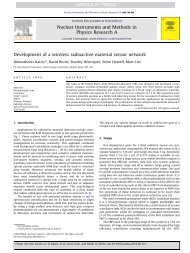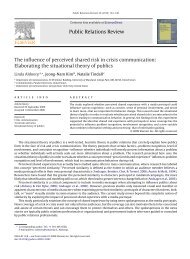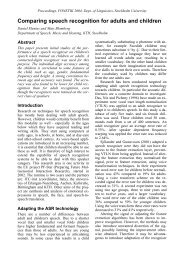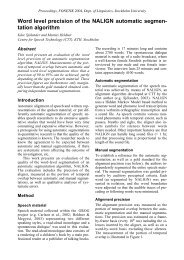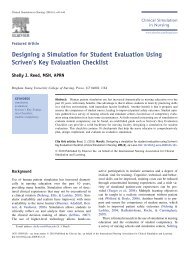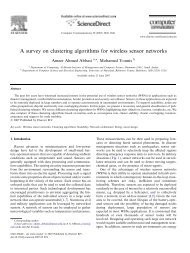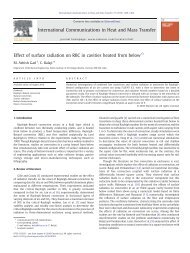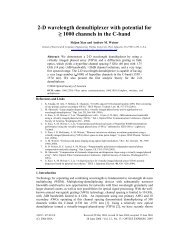MVNO services Policy implications for promoting MVNO diffusion
MVNO services Policy implications for promoting MVNO diffusion
MVNO services Policy implications for promoting MVNO diffusion
Create successful ePaper yourself
Turn your PDF publications into a flip-book with our unique Google optimized e-Paper software.
<strong>MVNO</strong>s have been launched in increasing numbers in recent years (Ovum, 2009). Once offering mainly cheap, often<br />
subscriber identity module-based, prepaid voice and short message <strong>services</strong>, <strong>MVNO</strong> offerings now span a wider range of<br />
mobile <strong>services</strong>, including 3G-based content and data <strong>services</strong>. As with many rollouts, however, <strong>MVNO</strong>s have recently<br />
started to lose their momentum showing a clear sign of downfall. The fundamental weakness of the underlying <strong>MVNO</strong><br />
business model is that it only works <strong>for</strong> niches or areas where the network operators are not prepared to venture. The<br />
<strong>MVNO</strong> model has a systemic competitive disadvantage, which is that the underlying operators always have a cost<br />
advantage. The failures of many <strong>MVNO</strong>s were rooted in not offering something that could be had cheaper from the network<br />
operators (Ovum, 2009). Virgin mobile in the UK <strong>for</strong> example leverages the Virgin brand and bundled offerings from other<br />
Virgin group companies, something that cannot be reproduced by other network operators. Other problems have to do<br />
with the technology. <strong>MVNO</strong> providers have struggled over how to personalize phones over the air, as well as how to enable<br />
a better experience <strong>for</strong> using mobile applications via the phone. Another challenge is posed by the many competing<br />
standards; it is necessary to standardize protocols, schemes and <strong>services</strong>.<br />
Among other problems, consumer apathy seems to be the greatest barrier. According to TeleGeography (2008), some<br />
consumers are uncom<strong>for</strong>table with the idea of the <strong>MVNO</strong>—that is, the concern of unstable <strong>services</strong>—and they may be<br />
getting used to having <strong>services</strong> from traditional mobile carriers and may have been affected by network effects (network<br />
externalities) by the dominant incumbent carriers. While there is widespread enthusiasm and hope <strong>for</strong> consumer-oriented<br />
mobile <strong>services</strong>, there are also fears of unstable mobile <strong>services</strong>. <strong>MVNO</strong>s can customize their products to cater to a very<br />
distinct segment of the market, but there is a concern that such customized <strong>services</strong> may not be provided in a stable<br />
manner. The quality of such <strong>services</strong> and content has not yet been confirmed.<br />
Despite concerns over consumer preferences (Ovum, 2009), such issues have been addressed in only a few studies; however,<br />
those few studies focus on the sheer technical aspects of <strong>services</strong> and neglect user dimensions. There is much talk about the<br />
market potential <strong>for</strong> <strong>MVNO</strong> from industry perspectives (particularly economics of MNO, <strong>MVNO</strong> and MVNE), but little robust<br />
customer research from scholarly perspectives. Some academic studies on <strong>MVNO</strong>s have focused on the success factor of <strong>MVNO</strong><br />
business models such as mobile network infrastructure and competition (Cricelli, Grimaldi, & Ghiron, 2009), market structure<br />
(Shin, 2008), government regulations (Lee, Chan-Olmsted, & Ho, 2008), financial perspectives (Varoutas et al., 2002) andthe<br />
relationship between MNO and <strong>MVNO</strong> (Ovum, 2009). However, user preference <strong>for</strong> adopting <strong>MVNO</strong> <strong>services</strong> has not been<br />
thoroughly investigated in past studies. The lack of attention can be ironic in that the key idea of <strong>MVNO</strong>s has been consumerfocused<br />
and customer-directed. The majority of <strong>MVNO</strong>s have been consumer focused and the future success of <strong>MVNO</strong>s will be<br />
determined by how <strong>MVNO</strong>s effectively respond to consumers’ needs. Yet, there remained unanswered questions as to how<br />
consumers feel about <strong>MVNO</strong> <strong>services</strong>, what have been current users’ experiences of the <strong>services</strong> in various contexts and what<br />
will make future consumers engage with such <strong>services</strong>. It may be important to investigate how consumers perceive usability,<br />
how their intentions are <strong>for</strong>med, what cognitive perceptions are fulfilled and what factors influence consumers’ usage behavior.<br />
For these questions, UTAUT is applied to propose a research model that incorporates perceived quality, usefulness, ease of use,<br />
compatibility, relative advantage, switching cost and subjective norm as enhancing constructs to predict users’ motivations <strong>for</strong><br />
adopting <strong>MVNO</strong> <strong>services</strong> over MNO <strong>services</strong>.<br />
With the integrated theoretical framework, this study aims at understanding the user preference <strong>for</strong> adopting <strong>MVNO</strong><br />
<strong>services</strong> in the U.S. market. The <strong>MVNO</strong> market in the U.S. has been one of the largest markets in the world (TeleGeography,<br />
2008). It is expected to generate $22.7 billion in revenues by 2011 (Cricelli et al., 2009). Thus, it is worthwhile to research<br />
the consumer behavior of <strong>MVNO</strong>s in this growing market. Using Structural Equation Modeling as a method of analysis, this<br />
study examines the motivations and intentions of <strong>MVNO</strong> consumers. Although such findings from U.S. consumers may not<br />
generalize to other markets, it offers a set of <strong>implications</strong> that can help telecom researchers and <strong>MVNO</strong>s better understand<br />
how consumers develop perceptions of features and how it contributes to their usage intentions. The findings should be of<br />
interest to both academics and industry concerned with understanding and improving approaches to <strong>services</strong> and<br />
marketing planning. From a theoretical perspective, this study provides a model <strong>for</strong> identifying antecedents of user<br />
intention to adopt an <strong>MVNO</strong> service in reference to UTAUT and the innovation <strong>diffusion</strong> theory (IDT). From a practical<br />
standpoint, the findings should guide an industry <strong>promoting</strong> <strong>MVNO</strong>s in how to develop user dimensions by enhancing<br />
usability and appeal, as well as ensuring quality of <strong>services</strong>. The <strong>MVNO</strong> industry is facing the challenge of how to improve<br />
<strong>MVNO</strong> <strong>services</strong> that are useful, cheap, secure and customized (Lee et al., 2008). However, interface designs and related<br />
elements are rarely examined as qualities in the context of a consumer acceptance perspective. The findings in this study<br />
should be useful <strong>for</strong> the <strong>MVNO</strong> industry to improve their business. Implications and directions <strong>for</strong> future study are also<br />
discussed in the paper.<br />
2. Literature review<br />
2.1. <strong>MVNO</strong> trends<br />
D.-H. Shin / Telecommunications <strong>Policy</strong> 34 (2010) 616–632 617<br />
An <strong>MVNO</strong> is a mobile service operator that does not have its own licensed spectrum and does not have the<br />
infrastructure to provide mobile <strong>services</strong> to its customers (Fig. 1). Instead, <strong>MVNO</strong>s lease wireless capacity from pre-existing<br />
mobile service providers and establish their own brand names different from the providers, that is, they do not own the<br />
network on which their voice and data traffic <strong>services</strong> are carried (Cricelli et al., 2009).


